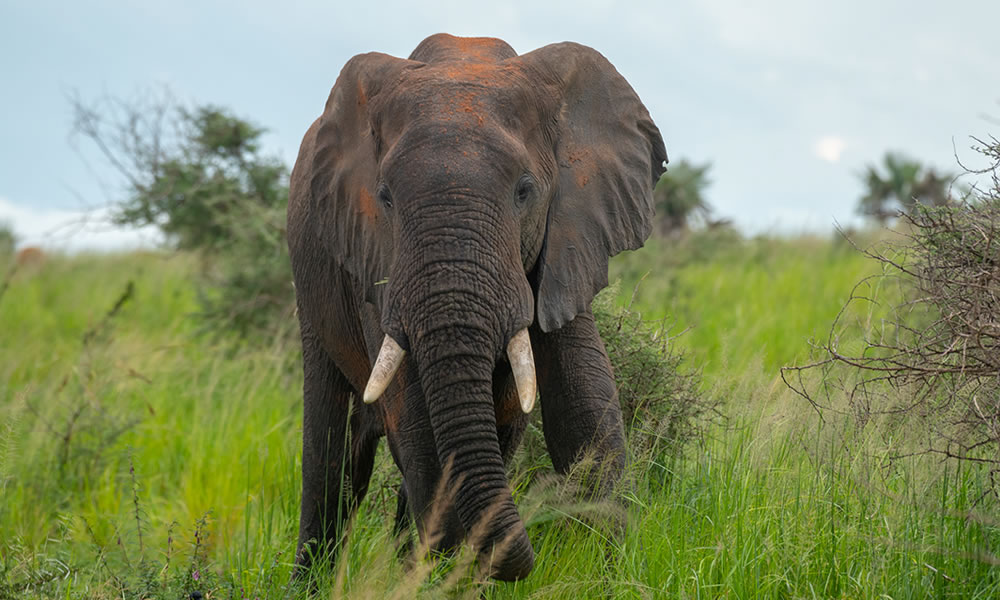Akagera National Park is located near the Tanzanian border in the eastern portion of the Republic of Rwanda. Established in 1934, Akagera National Park derives its name from the Akagera River that meanders along its eastern border and empties into a network of lakes, the largest of which is Lake Ihema It. The park spans 1,122 square kilometres. The majority of Akagera’s northern regions are low-lying grasslands and savannah plains, evoking memories of East Africa’s “traditional” safari regions. While the undulating hills and valleys to the east are more reminiscent of the Rwandan countryside, the forest-fringed lakes, papyrus swamps, savannah plains, and rolling mountains to the west make Akagera one of the most picturesque reserves in all of Africa. Known for its remarkable biodiversity, it is the biggest protected wetland in central Africa.

Activities in Akagera National Park
Game Drive
Regardless of the park’s vastness, this is one of the primary activities in Akagera National Park that allows you to experience the park’s natural beauty and sense its essence. The national park is undoubtedly well-known. Giraffes, Impalas, Topis, Zebras, African swallows, eland, vervet monkeys, warthogs, baboons, Mongooses, hippos, crocodiles, and elephants will all be visible to you in a short while. In addition to the more than 120 elephants in the park, there are numerous other mammals such as sable, buffalo, roan antelopes, reedbucks, fefassa waterbucks, and oribis. The most breathtaking views of Tanzania can be seen from the top of the mountain looking across Lake Ihema, and the most amazing trip from the south to the north in a single day will provide you with enough of wildlife to see and photograph. A night wildlife drive is very different from a daytime drive; you can see more nocturnal creatures then. A couple leopards, a lion, several cats, civets, lions, and hyenas can all be seen searching for their evening meal.
Bird Watching
When bird watching in Akagera National Park, visitors are always amazed by what they discover, particularly the diverse array of bird species that inhabit the park’s marshes, forests, and savannah areas in addition to migratory birds, many of which are extremely rare and endemic, such as the papyrus gonolex, which is found there. Additionally, Akagera National Park is home to the rare shoebill stork, the swamp fly catcher, and the locally found red-faced barbets. You can take short boat rides on Akagera’s lakes to get up close and personal with the many water birds that inhabit the area, such as several African fish eagles, marabou storks, crowned cranes, open-billed storks, cormorants, herons, and egrets. You might even be fortunate enough to spot the elusive shoebill stork.
Boat Cruise
The largest lake in the park, Lake Ihema, is the location of boat cruises and boat safaris that will expose you to a variety of wildlife. When on a safari in Rwanda, the greatest way to see the many water birds is from a boat excursion in Akagera National Park. You will consequently get the chance to get up up close and personal with some of these creatures, which include the endangered shoebill stork, African fish eagle, crowned crane, and marabou stork. There are a lot of hippos and crocodiles on another hard. Elephants and buffalos, among other wild creatures, can be seen up close on this boat ride. These animals congregate along the banks to drink water.
Cultural Tours
Through its partnerships with the local communities, Akagera National Park offers its tourists engaging safari experiences and cultural expeditions led by volunteer community guides. Here, music and dance are an integral part of daily life. Performances range from charming displays of bravery and skill to humorous songs, carefree dances, and rural artistry with roots in traditional agriculture. Other events include the Heritage, which is centred around cattle culture, the local production, which includes beers and crafts, arts and crafts, and celebrations, which include food and festivities. A glimpse into the lives of the communities surrounding the park is provided by each of these excursions.
Fishing
Lake Shakani is the location of the park’s sports fishing; enjoy a leisurely day of fishing from the lake’s edge before cooking your catch over an open fire at the campsite. You can bring your own equipment or rent it from the park, and you can spend the entire day fishing from Lake Shakani’s shoreline while learning various fishing techniques. The techniques include hooking, Gill nesting, Lam, casting net, scoop net, and the process of sprinkling and shooting. While you’re here, keep in mind that hippos spend the day in the water, and because the coasts’ banks are gently sloping, you can spot any crocodiles approaching before they eat you. This implies that you can fish without worrying about anything.
